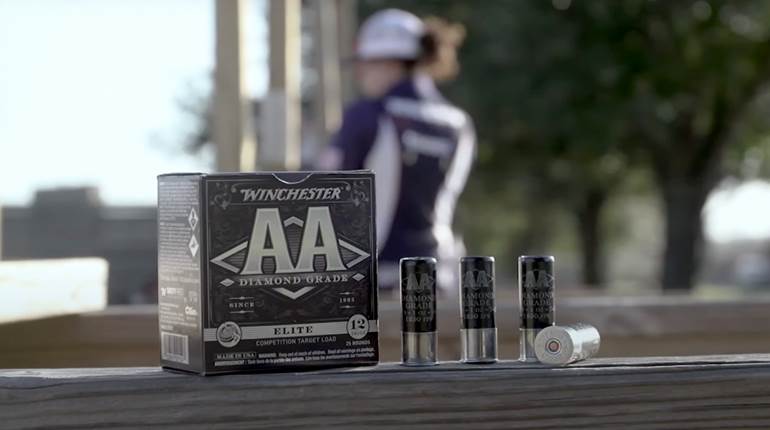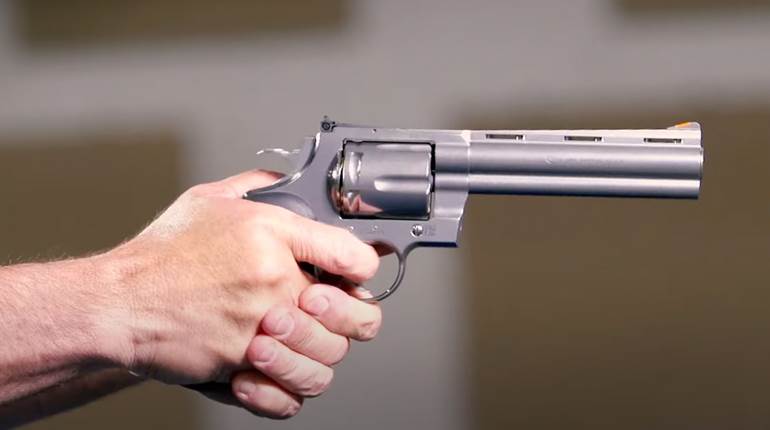On June 6, 1944, hundreds of thousands of American, British and other Allied troops landed on the beaches of Normandy on the north coast for France. Operation Overlord, as the plan was code worded, involved a combined naval and airborne landing in the region in order to gain a foothold in Nazi-occupied western Europe. The landing operation, now popularly known as "D-Day," was one of the largest landings in history, and helped hasten the end of Nazi Germany.
 A GI rushing out of cover with M1 Garand in hand.
A GI rushing out of cover with M1 Garand in hand.
American forces landed on two zones on the western half of the invasion area called "Utah" and "Omaha" beach. Elements of the 4th Infantry Division landed on Utah Beach, while the 1st and 29th Infantry Divisions went ashore at Omaha. The latter proved to be a death trap for the men on the beaches, as German defenses were more numerous at Omaha. The high number of casualties is the reason why the landings at Omaha are more well-known than those at Utah Beach.
 Theodore Roosevelt Jr.
Theodore Roosevelt Jr.
The 4th Infantry Division suffered less causalities than their compatriots on Omaha not only because the beaches of Utah were less guarded, but also due to the fact that most all of the force landed on the wrong part of the beaches. This had the unintended benefit of landing the force in a less-contested part of the shoreline. When it was suggested that the men get back into their landing craft to land again on the correct beaches, the 4th Infantry Division's Assistant Division Commander, Theodore Roosevelt Jr., ordered them to "start the war right here."
 A reenactor dressed as a German Wehrmacht rifleman armed with a Mauser K98k.
A reenactor dressed as a German Wehrmacht rifleman armed with a Mauser K98k.
The small arms used by the German and American infantry were suited to the respective tactics employed by each. German riflemen in Normandy were armed with the bolt-action Mauser K98k, while the machine gunners carried either the MG 34 or dreaded MG 42 general-purpose machine guns. German infantry tactics evolved around the machine gun as the center of the squad, and riflemen were used as support for the machine gun. Both the MG 34 and MG 42 could be used off bipods or tripod mounts and proved to be excellent defensive weapons.
 Shooting a German MG 42 on a tripod mount.
Shooting a German MG 42 on a tripod mount.
For the Americans however, infantry combat involved fire-and-maneuver tactics, in which the riflemen would be expected to provide cover for themselves and close on a target. The semi-automatic M1 Garand allowed U.S. riflemen to rifle rapidly and in greater volume than their bolt-action armed adversaries, and made up for the lack of a proper squad machine gun at the time. The machine guns used by the U.S. at the time were more cumbersome than their German counterparts, and included the belt fed M1919A4 and M1917 Browning machine guns. Despite being a design dating from World War I, the M1917 saw use in the Normandy landings and throughout the rest of World War II.
 A reenactor dressed as a U.S. Army rifleman with a M1 Garand.
A reenactor dressed as a U.S. Army rifleman with a M1 Garand.
After establishing a beachhead and pushing inland, the forces landing at Utah Beach linked up with splintered groups of 101st and 82nd Airborne paratroopers that had landed the night before. The paratroopers succeeded in securing roadways and bridges along with confusing German forces, helping accelerate the push inland. The advance soon slowed, however, as the Allied forces encountered the overgrown hedgerows that blanketed Normandy. Yet with the continued supplies brought in through the footholds on the landing beaches, the Allied forces eventually pushed deeper into Nazi occupied France.
To watch complete segments of past episodes of American Rifleman TV, go to americanrifleman.org/artv. For all-new episodes of ARTV, tune in Wednesday nights to Outdoor Channel 8:30 p.m. and 11:30 p.m. EST.
























